杣大工
—Profiles—
山本 耕平 Kohei Yamamoto(Founder/CEO)
一級建築士 一級技能士
職業訓練校木工科にて日本の伝統工具の扱い、家具造りを学ぶ。卒業後岡山の新東住建工業株式会社にて堂宮大工として8年間修行する。文化財の修復の経験を通じて現在の新築木造住宅との構法の違いに疑問をいだく。2012年に杣耕社を設立後、新築木造住宅を石端建伝統構法で取り組む。
古代製材を研究中。昭和初期に途絶えてしまった鉞(まさかり)、釿(ちょうな)、大鋸(おが)を使った杣(そま)の技術で得られる木材の加工肌の美しさに木造建築の可能性を模索。
First class licensed carpenter, architect
While attending trade school specializing in wooden crafts Kohei was introduced to and fell in love with hand tools. He delved deeply into the furniture arts but at the advice of his professor took a job as a Japanese Temple and Shrine carpenter. For 8 years he worked on some of the most famous temples and shrines in Japan including Important Cultural Heritage sites such as the Great Shrine at Izumo. Seeing and working on buildings like these that had stood the test of time he was interested in why present day homes weren’t considered with as much thought when building. He also fell in love with the mark that carpenters had left using traditional methods of sawing, milling, and finishing in the past.
In 2012 he was given the opportunity to take on a project building a new home in Fukuyama city. He accepted it and built one of the first traditional Ishibatate homes (see Structure) in the area since prior to WWII. Finishes included everything from finely planed to adze and axe finishes used in rough milling. This began his company Soma.ko.sha. The character for Soma (杣) means traditional sawing/milling. The character for Ko (耕) means to cultivate. The final character is a typical character meaning company
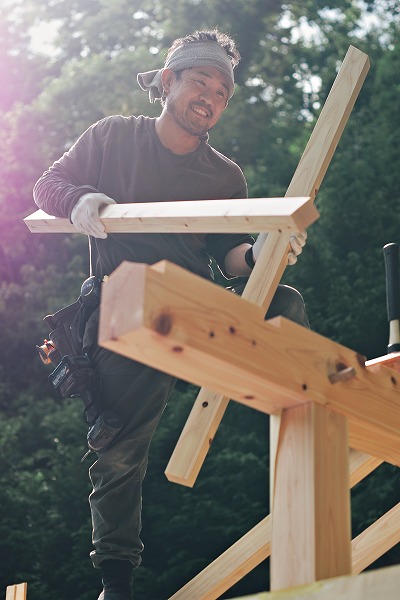
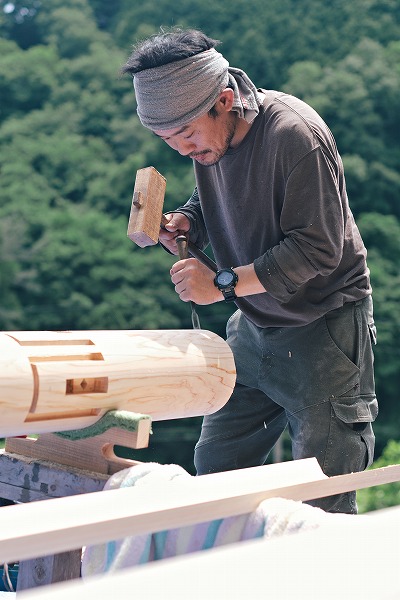
ストーレンマイヤージョナサン Jonathan Stollenmeyer(Co-CEO)
2005年アメリカの建築大学卒後南米、ヨーロッパ、日本を巡る。アメリカの建築事務所で設計を一年経験するが、職人の手仕事に興味を持ちノルウェーの伝統的な木船を造る親方に師事しニューハンプシャーで一年半を過ごす。その後日本に渡り京都の中村外二工務店で茶室の仕事に三年間従事する。
2013年杣耕社代表と当時施行中の福山の現場にて接触。日本古来の構法にこだわり家を建てるやり方に感銘を受け自分の大工としての方向性が定まる。
2013年11月杣耕社入社。
当初数寄屋、堂宮といった空間や装飾の美しさに惹かれ日本の大工を志したが、日本の風土や気候に適した構法の上に成り立つ建物に携わりたいと願う。
Jon graduated the University of Cincinnati DAAP architecture program in 2005. After University, Jon followed his passion for design and architecture by working at offices, working in the craft traditions, and traveling to see and experience spaces that he thought looked like special examples of timeless building practices structurally & aesthetically.
He worked for a traditional boatbuilder building an historic Snekke from the lofting and design stage through to finish.
He worked in downtown Cincinnati in architectural offices and on-site renovating historic buildings into modern shops and living spaces.
He traveled around the world to Central and South America, Scandinavia, Europe, and of course Japan to see and experience spaces by architects that inspired him like Kahn, Barragan, Lewerentz, Zumthor, and many more.
In 2007 he moved to a Zen monastery in the woods of Kentucky. For more than a year he spent his days in zazen meditation and working for that community.
Realizing that he wanted to be working with his hands and not in an architectural office, in the Fall of 2009 he made his way back to Japan to take a course in Japanese and pursue the dream of working with Japanese carpenters in their trade.
Through the mentorship and introduction of his tea-ceremony teacher he began work with the world-famous Nakamura Sotoji Komuten in the Fall of the following year.
This company of architects and carpenters is doing projects within Japan and abroad in the ‘Sukiya’ or teahouse style. In 2013, despite his love for the work that Nakamura is doing, he got the opportunity to see Kohei Yamamoto’s work in Okayama Prefecture and the building’s Ishibatate carpentry style astounded him. At the end of his contract with Nakamura he received approval from his boss and mentor there to leave and study elsewhere.
In November of 2013 he began work at SomaKosha learning the Ishibatate framing style under the tutelage of Mr. Yamamoto. The next year Jon began his first project as ‘Toryo’ (head carpenter) renovating an old Minka in Okayama.
Jon has been fortunate to have his original boss from Kyoto ask SomaKosha to head projects abroad as a subcontractor due to his ability to speak both English and Japanese fluently and his long study as a carpenter & then a designer in the Japanese tradition.
Jon has been fortunate to have the opportunity to work on many Heritage Sites in Japan and is particularly well known for his hewing with the broad-axe and adze on such projects.
As of 2024, Jon is Partner & Managing Director of SomaKosha and is running projects both in Japan and internationally.
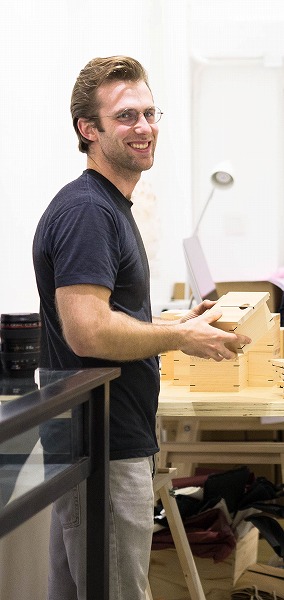
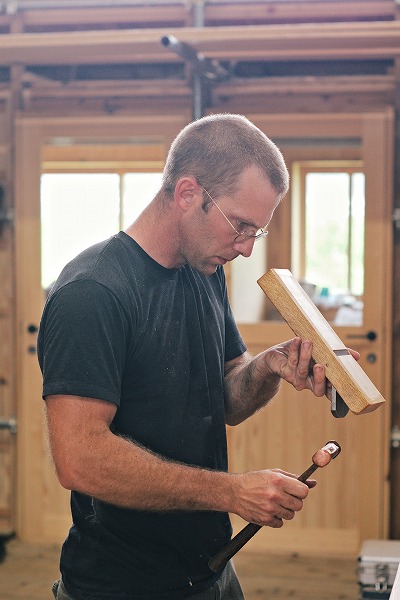
企業理念
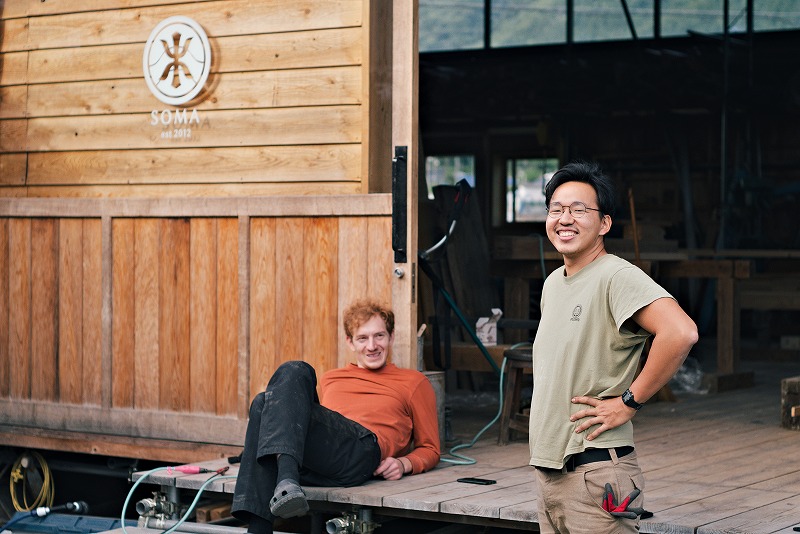
The future of tradition
私たちは、人と建物が交わる瞬間にこそ、本当の美しさが宿ると信じています。機能性と美を両立させた雅やかなデザインが、住む人々の日常にときめきをもたらすことを願いながら、建築と装飾に心を込めています。
家はただの住まいではありません。杣大工が手掛ける丁寧で温もりあふれる家は、そこに暮らす人の所作までも美しく変えていきます。
嗜む、一体同船――自然素材で造られた住まいと共に馴染み合い、深く寄り添う。その中で得られる体験こそ、杣大工が生み出す家ならではの特別なものです。
「次世代に遺すべき職人技」と称されることもありますが、私たちの心にあるのは使命感ではありません。やればやるほど、この仕事が面白いから。それに共感する仲間たちが集まり、楽しみながら技術を磨き、その魅力を次へと伝える。それが結果的に未来の伝統を築いていく――そう思いながら、今日も鍛錬を重ねています。
We believe that true beauty lies at the intersection of people and architecture. With a refined sense of elegance that balances functionality and aesthetics, we design and craft spaces to infuse moments of delight into the everyday lives of those who dwell within them.
A home is more than just a shelter. The warm and meticulous craftsmanship of Soma Daiku transforms not only the space but also the grace of its inhabitants, elevating their daily lives to something more beautiful.
With homes built from natural materials, you grow closer to the space, forming a bond unique to the experience of living in a house crafted by Soma Daiku.
Our work is often described as “skills worth preserving for the next generation.” Yet, for us, it’s not about a sense of obligation. We continue because we genuinely enjoy the craft. This passion draws like-minded individuals together, who hone their skills and pass them on simply because it’s fulfilling. Through this collective joy, we believe we are naturally creating the traditions of the future—one step, one day, one home at a time.
風が通り、木が呼吸する
山に入り、木と対話する――杣大工は、木の個性を手刻みで引き出し、設計から施工までを一貫して手掛けます。千年以上の歴史の中で磨かれ、受け継がれてきた優れた伝統構法を駆使し、木の表情を読み解きながら適材適所で活かす。その技術が、堅牢で美しい建物を生み出します。礎石と土台を固定しない「石場建構法」で造られる建物は、通気性に優れ、防腐性が高いのが特長。住まいが息づき、時を重ねるごとに健康に育っていきます。
Entering the mountains and engaging in dialogue with the trees, Soma Daiku craftsmen carefully bring out the unique character of each piece of wood through meticulous hand-carving. They oversee every aspect of the process, from design to construction, ensuring harmony between nature and craftsmanship.
Harnessing traditional construction techniques refined over more than a millennium, they interpret the natural beauty of the wood and apply it with precision and purpose. This expertise results in structures that are not only strong and durable but also exquisitely crafted.
Buildings constructed using the Ishiba Tate method, where the foundation stones and wooden base are not fixed together, boast excellent ventilation and high resistance to decay. These homes breathe and evolve over time, growing healthier as they age.
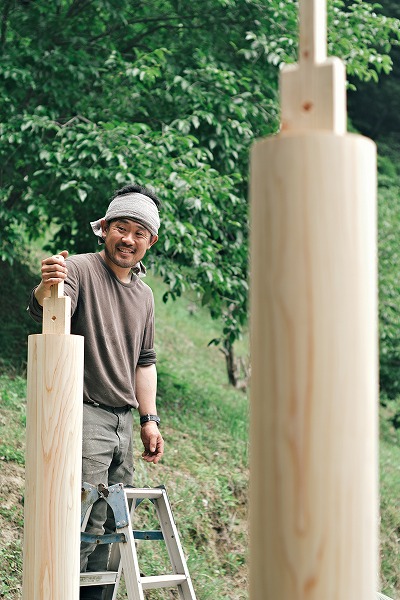
細部の美しさが、住まいの表情を変える
私たちの丁寧で美しい仕事ぶりは、伝統建築で磨かれた数々の技法を活かしたもの。高い技術と豊富な知識はもちろん、その技術に裏打ちされた研ぎ澄まされた感性が多くの信頼をいただいています。その結果、施主や建築家の間で評判を呼び、業界でも名を知られる存在へと成長しました。
丁寧に仕上げられた材や接ぎ目は、一見控えめながらも確実に建物の品格を高めます。傷んだ柱に施した金輪根接ぎの美しさが際立ち、隠すには惜しいと、キッチンの配置を変えてまで接ぎ目を見せる設計にした――そんなお褒めの言葉をいただくことも少なくありません。それはまるで、建物が物語る美しさを、住む人々と分かち合うような瞬間です。
Our meticulous and elegant craftsmanship is built upon the refined techniques honed through traditional architecture. Beyond possessing advanced skills and extensive knowledge, our work is distinguished by a keen, polished sensibility that has earned the trust of many. This reputation has spread among homeowners and architects alike, establishing us as a recognized name within the industry.
The carefully finished materials and precise joints, though understated, undeniably elevate the quality and dignity of the structures we create. The striking beauty of a Kinwanegi repair on a damaged pillar has even led to instances where clients reconfigured their kitchen layout to showcase the joint rather than conceal it. Such compliments are not uncommon and serve as a testament to the artistry we bring to our work. It is as though the building itself tells a story of beauty, shared with those who dwell within its spaces.
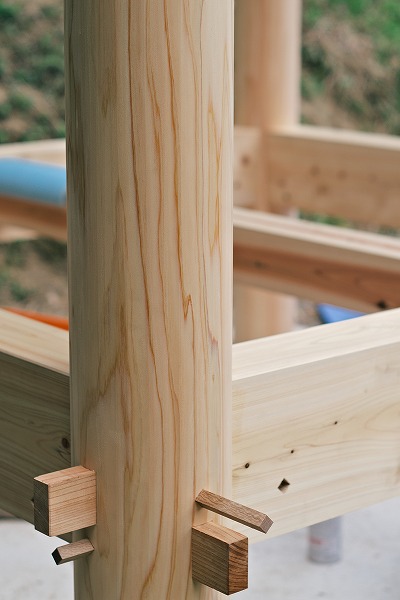
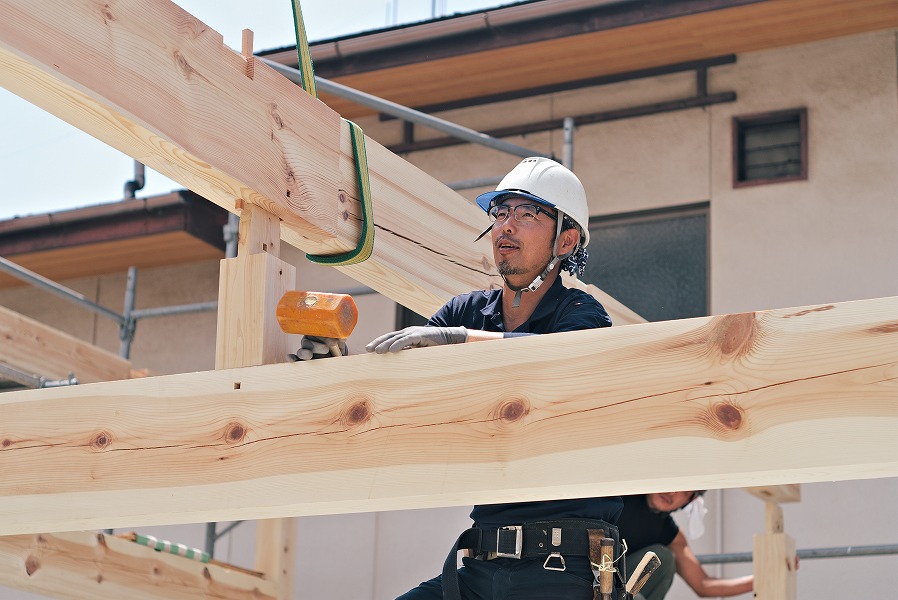
伝統の力で、住まいに息吹を
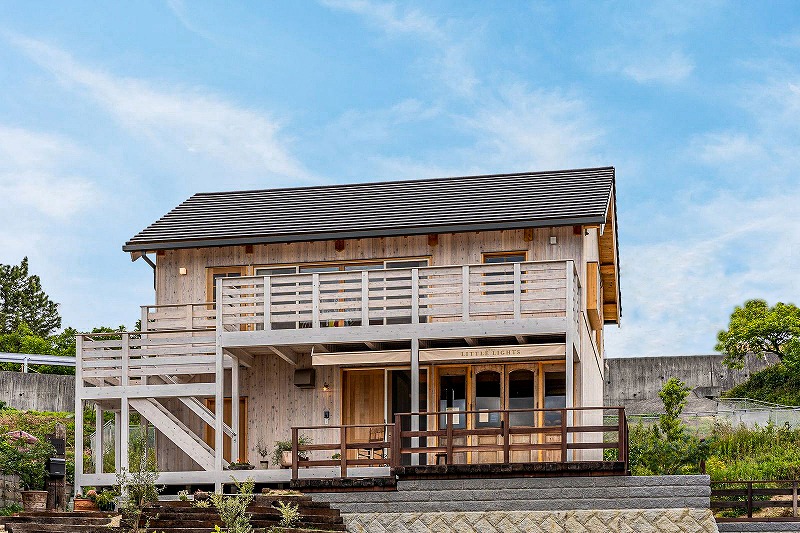
杣大工の手にかかれば、修復の跡すら住まいの魅力へと昇華されます。伝統構法は、住まいに堅牢さと美しさをもたらすだけでなく、日本の風土に根差した確かな安心感を提供します。
かつて高嶺の花とされた石場建をはじめとする伝統構法も、現代の住まいに調和するよう工夫を重ね、手の届く形でお届けしています。伝統と革新が融合したその技術は、ただ美しいだけでなく、暮らしに寄り添いながら未来へ続く価値を生み出します。
In the hands of Soma Daiku, even the marks of restoration are transformed into captivating features of a home. Traditional construction methods not only bring strength and beauty to a structure but also offer a deep sense of reassurance, perfectly suited to Japan’s unique environment.
Once considered a luxury, techniques like Ishiba Tate have been thoughtfully adapted to harmonize with modern homes, making them more accessible than ever. This fusion of tradition and innovation creates spaces that are not only visually stunning but also deeply attuned to everyday life, delivering lasting value for generations to come.
会社概要
| 社名 | 杣耕社 |
| 事業内容 | 伐採、製材 総合建築、企画設計、建築設計管理業務(注文住宅・店舗)、施工 建替、増改築、リフォーム |
| 代表取締役 | 山本 耕平 Jonathan Stollenmeyer |
| 所在地 | 〒709-2136 岡山県岡山市北区御津紙工2773 |
| TEL | 0868-97-4426 |
| 設立年月日 | 2012年 |
| 建設業者許可番号 | 岡山県知事許可(般 - 5)第26740号 |









